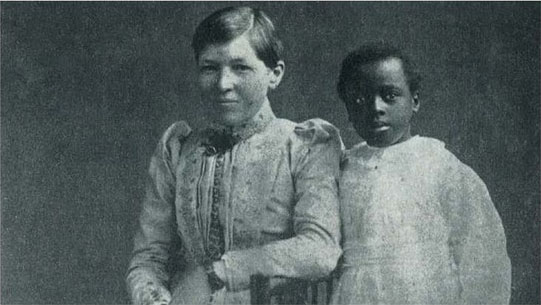Thomas Baldwin reports on a new honour bestowed on one of Scotland’s best-known Victorian missionaries.
PRESBYTERIAN missionary Mary Slessor is to be celebrated at a major landmark museum in a historic move to recognise the deeds of famous women.

Mary Slessor (left)
The Dundee mill worker was chosen by public vote to be immortalised in the Hall of Heroes at the National Wallace Monument near Stirling.
A memorial to Ms Slessor will soon join the existing 16 busts of famous men from Scotland’s history.
The Rev Ian Alexander, Secretary of the World Mission Council of the Church of Scotland, said he and his colleagues were “thrilled and delighted” that the missionary had been chosen as one of the first women to be immortalised.
He said: “She is an iconic figure in Scotland and her pioneering work in Calabar, Nigeria, remains an inspiration to this day.
“Today, the Church of Scotland, internationally, nationally and locally, continues her legacy in its commitment to work with partners around the world in addressing justice, health issues, and opportunities for all people to live full and productive lives.”
Mary, born in Aberdeen in 1848, was inspired by the legendary explorer, Dr David Livingstone, to work as a missionary in Calabar, Nigeria in Western Africa in 1876.
She is still revered in Nigeria, where she is known as ‘mother of all the peoples’ for her work in saving the lives of twins (overcoming local superstition that twins represented evil spirits) and working to improve the lives of the local community in Calabar. She introduced basic medical assistance, imported key skills from Scotland and encouraged trade and the local economy, even becoming an effective magistrate for the British Governor – the only female judge within the British Empire.
Dona Robertson, a member of the Steeple Church in Dundee which bears a bronze plaque to commemorate Mary Slessor’s work, said the recognition was a ‘very fitting tribute to a truly remarkable woman’.
She said: “After her death, it was said of Mary Slessor by a colleague that in her lifetime, ‘she was a whirlwind, an earthquake, a fire and a still small voice all in one’.
“For me, that sums up Mary.
“She was a unique woman and missionary in her time and she was a missionary for the people.
“Mary Slessor did not conform to the colonial attitudes of the day and became one of the people in the way she lived her life.
“This was brought home to me when I visited Calabar in 2015, by just how much she is still loved, respected and honoured there.
“I was told many times that in Scotland we must not forget Ma Slessor and that Mary Slessor is not dead because she is in our heart.”
Altogether, 14 notable women (including the martyred Church of Scotland missionary Jane Haining) were shortlisted for a place in the Hall of Heroes. Between January and April, more than 4000 votes were cast online and at the monument. In a last-minute twist, campaign organisers Stirling District Tourism announced that two would be chosen.
The other place will go to Maggie Keswick Jencks, co-founder of Maggie’s Centres, which offer practical, emotional social support to people with cancer and their families.
The Wallace Monument was opened in 1869 and attracts over 100,000 visitors a year. The first busts, of Robert Burns and Robert the Bruce, were installed in 1886.
Zillah Jamieson of Stirling District Tourism, said: "This has been an incredible campaign, one which has ignited passions and has stimulated an amazing response. The level of enthusiasm for women to be given recognition has been truly inspirational.”